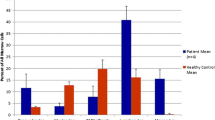Abstract
Rituximab is associated with late-onset neutropenia, which occurs after the end of therapy. This side effect was initially considered a rare phenomenon, but recent studies have suggested an incidence rate between 5 and 30%. Although its physiopathology is poorly understood, recent advances have suggested that production of large granular lymphocytes and/or disruption of B-cell homeostasis during B-cell recovery after rituximab therapy could explain the occurrence of neutropenia. This complication is not usually associated with life-threatening complications, and treatment is based on antibiotics and G-CSF, if indicated. Retreatment after the first episode of neutropenia is probably associated with an increased risk of relapse. Besides this complication, the use of rituximab alone or with chemotherapy is associated with an increased risk of neutropenia and infection during treatment. These infectious complications are usually benign, mostly within the ORL and bronchus tract.
Résumé
Le rituximab est associé à un risque de neutropénie tardive, survenant en moyenne dans les six mois qui suivent l’arrêt du traitement. Cet effet secondaire, largement sous-déclaré, pourrait concerner jusqu’à un tiers des patients traités. La physiopathologie est mal connue et impliquerait essentiellement l’expansion de grands lymphocytes à grains et/ou un déséquilibre au moment de la reconstitution lymphocytaire B induite par le traitement. Alors que le risque de complication grave est limité, la prise en charge comporte une antibiothérapie en cas de fièvre, éventuellement associée à des facteurs de croissance. Le retraitement par rituximab pourrait être associé à un risque plus important de complication. À côté de cet effet, le rituximab, seul ou en association avec la chimiothérapie, semble augmenter, pendant le traitement, le risque de neutropénie et le risque infectieux. Celui-ci reste cependant le plus souvent limité à des complications ORL ou bronchiques de gravité faible.
Similar content being viewed by others
Références
Cairoli R, Grillo G, Tesdeschi A, et al. (2004) High incidence of neutropenia in patients treated with rituximab after autologous stem cell transplantation. Haematologica 89: 361–363
Coiffier B, Lepage E, Briere J, et al (2002) CHOP chemotherapy plus rituximab compared with CHOP alone in elderly patients with diffuse large-B-cell lymphoma. N Engl J Med 346: 235–242
Dunleavy K, Hakim F, Kim HK, et al. (2005) B-cell recovery following rituximabbased therapy is associated with perturbations in stromal derived factor-1 and granulocyte homeostasis. Blood 106: 795–802
Dunleavy K, Tay K, Wilson WH (2010) Rituximab-associated neutropenia. Semin Hematol 47: 180–186
Feugier P, Van Hoof A, Sebban C, et al. (2005) Long-term results of the R-CHOP study in the treatment of elderly patients with diffuse large B-cell lymphoma: a study by the Groupe d’étude des lymphomes de l’adulte. J Clin Oncol 23: 4117–4126
Grant C, Wilson WH, Dunleavy K (2011) Neutropenia associated with rituximab therapy. Curr Opin Hematol 18: 49–54
Hallek M, Fischer K, Fingerle-Rowson G, et al. (2010) Addition of rituximab to fludarabine and cyclophosphamide in patients with chronic lymphocytic leukaemia: a randomised, open-label, phase 3 trial. Lancet 376: 1164–1174
Hirai Y, Ainoda Y, Shoji T, et al (2011) Disseminated cryptococcosis in a non-Hodgkin’s lymphoma patient with lateonset neutropenia following rituximab-CHOP chemotherapy: a case report and literature review. Mycopathologia. [Epub ahead of print]
Lemieux B, Tartas S, Traulle C, et al. (2004) Rituximab-related late-onset neutropenia after autologous stem cell transplantation for aggressive non-Hodgkin’s lymphoma. Bone Marrow Transplant 33: 921–923
Li SC, Chen YC, Evens AM, et al (2010) Rituximab-induced late-onset neutropenia in newly diagnosed B-cell lymphoma correlates with Fc receptor FcΓRIIIa 158 (V/F) polymorphism. Am J Hematol 85: 810–812
Nitta E, Izutsu K, Sato T, et al. (2007) A high incidence of late-onset neutropenia following rituximab-containing chemotherapy as a primary treatment of CD20-positive B-cell lymphoma: a single-institution study. Ann Oncol 18: 364–369
Pfreundschuh M, Schubert J, Ziepert M, et al (2008) Six versus eight cycles of bi-weekly CHOP-14 with or without rituximab in elderly patients with aggressive CD20+ B-cell lymphomas: a randomised controlled trial (RICOVER-60). Lancet Oncol 9: 105–116
Salles G, Seymour JF, Offner F, et al. (2011) Rituximab maintenance for 2 years in patients with high tumour burden follicular lymphoma responding to rituximab plus chemotherapy (PRIMA): a phase 3, randomised controlled trial. Lancet 377: 42–51
Stalika E, Papalexandri A, Kannelis G, et al (2010) Transient monoclonal CD3+ T large granular lymphocyte proliferation in a case of mantle cell lymphoma with Rituximab-associated late onset neutropenia. Hematol Oncol. [Epub ahead of print] Article first published online — DOI: 10.1002/hon.963
Stamatopoulos K, Papadaki T, Pontikoglou C, et al. (2008) Lymphocyte subpopulation imbalances, bone marrow hematopoiesis and histopathology in rituximab-treated lymphoma patients with lateonset neutropenia. Leukemia 22: 1446–1449
Tesfa D, Gelius T, Sander B, et al (2008) Late-onset neutropenia associated with rituximab therapy: evidence for a maturation arrest at the (pro)myelocyte stage of granulopoiesis. Med Oncol 25: 374–379
van Oers MH, Klasa R, Marcus RE, et al. (2006) Rituximab maintenance improves clinical outcome of relapsed/resistant follicular non-Hodgkin lymphoma in patients both with and without rituximab during induction: results of a prospective randomized phase 3 intergroup trial. Blood 108: 3295–3301
Wolach O, Bairey O, Lahav M (2010) Late-onset neutropenia after rituximab treatment: case series and comprehensive review of the literature. Medicine (Baltimore) 89: 308–318
Author information
Authors and Affiliations
Corresponding author
About this article
Cite this article
Delarue, R. Neutropénie et risque infectieux sous rituximab. Oncologie 13, 581–584 (2011). https://doi.org/10.1007/s10269-011-2068-y
Received:
Accepted:
Published:
Issue Date:
DOI: https://doi.org/10.1007/s10269-011-2068-y




